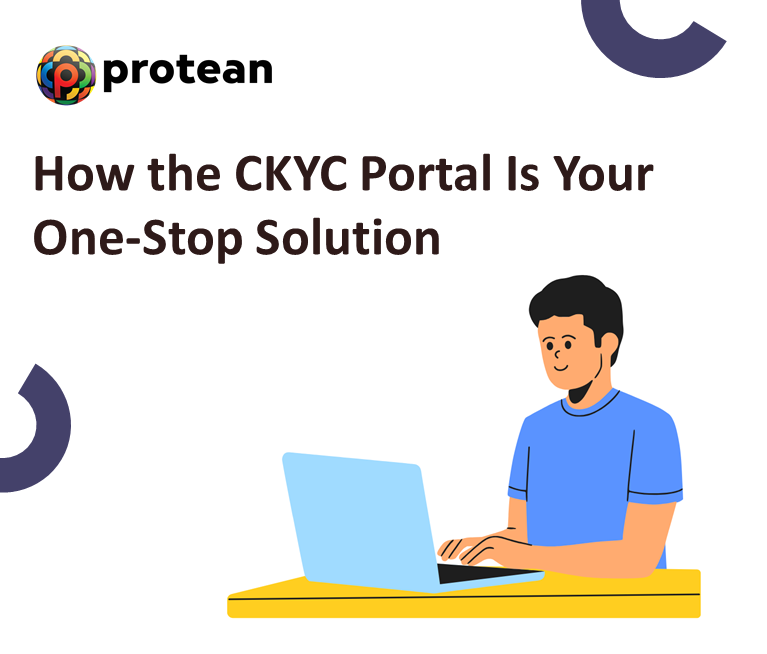Efficiency and security are essential, especially when it comes to financial transactions. Know Your Customer (KYC) norms are an important foundation of the financial sector, designed to prevent identity theft, financial fraud, and money laundering. However, the traditional method of manual KYC has long been a source of frustration for both customers and financial institutions. The emergence of the Central KYC (CKYC) portal has been a game-changer, offering a streamlined and secure alternative. This guide will help to understand the significant problems associated with manual KYC and explore how the CKYC portal provides effective solutions.
| Also Read: What is CKYC number? How to find and use your CKYC number in India |
The Headaches of Manual KYC: A Customer's Nightmare
Let's look at some of the major challenges of Manual KYC:
1. Redundancy and Repetition
The most significant drawback of manual KYC is the need to repeat the process for every new financial product or service. Customers have to submit the same set of documents and fill out similar forms time and again whether opening a bank account, investing in mutual funds, or purchasing insurance. This redundancy is not only time-consuming but also incredibly frustrating.
2. Time-Consuming and Inconvenient
The manual verification process is notoriously slow. It involves the physical submission of documents, which are then manually verified by the financial institution. This can take anywhere from a few hours to several days or weeks depending on the institution, delaying the onboarding process and hindering customer experience.
3. Risk of Human Error
Manual data entry and verification are prone to human error. A simple mistake in entering a name, address, or ID number can lead to discrepancies and delays. These errors can be difficult to rectify and can cause significant inconvenience for the customer.
4. Security and Privacy Concerns
The physical submission and storage of sensitive personal documents pose a significant security risk. There is always a chance of documents being misplaced, lost, or falling into the wrong hands, leading to potential identity theft and fraud.
5. Inconsistent Standards
Different financial institutions often have slightly different KYC requirements and formats. This lack of standardization adds to the confusion and complexity for customers, who have to navigate a maze of varying documentation and verification procedures.
The CKYC Portal: A Centralized Solution to KYC Woes
Recognizing the need for a more efficient and secure KYC process, the Government of India introduced the Central KYC Registry (CKYCR), a centralized repository of KYC records. The CKYC portal, managed by the Central Registry of Securitisation Asset Reconstruction and Security Interest of India (CERSAI), is the online platform that facilitates this centralized KYC process.
Here's how the CKYC portal effectively addresses the problems of manual KYC:
1. One-Time Verification
The CKYC portal operates on the principle of "do it once, use it forever." Once a customer completes their CKYC process with a financial institution, their details are stored in the centralized repository, and a unique 14-digit CKYC number (also known as the KYC Identification Number or KIN) is generated. This CKYC number can then be used for all future financial transactions, eliminating the need to repeat the KYC process.
2. Instant Verification and Onboarding
The verification process is significantly faster with the CKYC portal. Financial institutions can access a customer’s verified KYC details using their CKYC number, reducing onboarding time and enabling quicker access to financial services.
3. Accuracy and Integrity
Since the data on the CKYC portal is digitally stored and verified, the chances of human error are significantly reduced. Any updates or changes to a customer's details are reflected in the central repository, ensuring that all linked financial institutions have access to the most up-to-date and accurate information.
4. Enhanced Security
The CKYC portal employs robust security measures to protect customer data. All information is stored in an encrypted format, and access is restricted to authorized institutions only. This eliminates the risks associated with the physical handling and storage of documents, providing customers with greater peace of mind.
5. Standardization and Uniformity
The CKYC initiative has standardized the KYC process across the financial sector. All regulated financial institutions, including banks, insurance companies, and mutual fund houses, adhere to the same set of KYC norms. This uniformity simplifies the process for customers and ensures a consistent and seamless experience.
| Also Read: Protean Introduces Game-Changing CKYC Solution |
Benefits for All: Customers and Financial Institutions
The CKYC portal offers a win-win situation for both customers and financial institutions:
1. For Customers
- Convenience: No more repetitive paperwork and multiple verification processes.
- Time-Saving: Faster onboarding and access to financial services.
- Security: Enhanced protection of personal and financial data.
- Control: Customers can easily update their information in one place.
2. For Financial Institutions
- Cost-Effective: Reduced costs associated with manual verification and paperwork.
- Efficiency: Streamlined onboarding process and improved operational efficiency.
- Compliance: Easier adherence to regulatory KYC and Anti-Money Laundering (AML) norms.
- Reduced Fraud: Centralized and verified data helps in mitigating the risk of fraud and financial crime.
How to Get Your CKYC Number
Getting your CKYC number is a straightforward process. The next time you engage with a financial institution for a new product or service, they will complete your CKYC process. You will need to submit the CKYC form along with your identity and address proofs (such as your PAN card, Aadhaar card, and a passport-sized photograph). Once your details are verified and uploaded to the CKYC portal, you will receive your unique 14-digit CKYC number via SMS and email.
Conclusion
The move from manual KYC to the CKYC portal is a significant step towards a more efficient, secure, and customer-friendly financial ecosystem. The CKYC portal is empowering both individuals and financial institutions by eliminating the redundancies and inefficiencies of the traditional process. The importance of a centralized and streamlined KYC process cannot be overstated as we move towards a more digital-first future. The CKYC portal and your unique 14-digit CKYC number are essential tools that enable seamless and hassle-free access to financial services across institutions.

